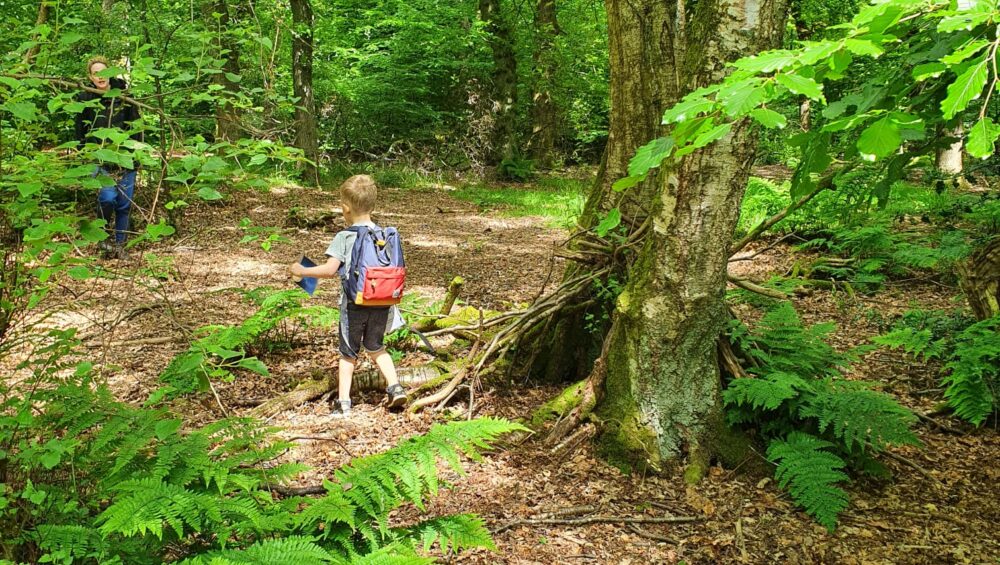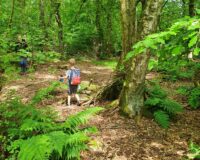Have you ever noticed how much better you feel after spending time in nature? Maybe you take a walk along the beach, hike up a mountain trail, or simply relax in a quiet park. Writers and thinkers have long celebrated the power of nature, from Thoreau to William Murray, who urged people to reconnect with the “old, old nurse, Nature.” Their wisdom wasn’t just poetic; modern science is finding solid evidence that nature offers incredible mental and cognitive benefits. And with our increasingly urbanised lives, we need those benefits more than ever.
The Cognitive Boost from Green Spaces
Numerous studies have shown that being in green spaces enhances cognitive performance. Children who live near greenery tend to do better in school, and adults with views of green spaces show stronger self-control. In one fascinating study, residents in public housing were randomly assigned to buildings with different levels of greenery; those in “greener” buildings scored higher on attention-based tasks than those in more urban settings. Even something as simple as looking at pictures of nature or listening to nature sounds has been found to improve memory, focus, and flexibility of thought compared to urban sounds or images.
Nature vs. Cities: It’s Not Just About Mood
Interestingly, the cognitive benefits of nature aren’t just about feeling happier or less stressed—though those are great perks! In fact, studies show that improvements in cognitive functioning occur even when mood isn’t affected. For instance, when researchers compared people who walked in nature during different seasons, they found that while summer walks improved mood more than winter ones, the cognitive boosts were consistent year-round.
The big question, then, is: why? Why does nature have this unique impact on our minds?
Theories on Why Nature Benefits the Brain
Scientists have proposed a few theories:
Stress-Reduction Theory: Natural settings help us recover from stress. Because they don’t make us feel threatened, nature scenes can soothe our minds, reducing stress and allowing us to focus better.
Attention-Restoration Theory: Urban environments often demand intense focus (think: traffic and noise), which wears out our mental resources. Nature, on the other hand, offers what’s called “soft fascination.” A babbling brook or rustling leaves capture our attention without demanding too much from us, giving our directed-attention systems time to recharge.
Perceptual-Fluency Theory: Nature scenes are simply easier for our brains to process than the hard edges and noise of urban environments. This ease of processing may enhance positive feelings and, in turn, improve our attention.
Prospect-Refuge Theory: This idea isn’t about “nature” per se but rather the kinds of landscapes we find appealing. We’re naturally drawn to environments where we can see clearly (prospect) but also feel safe (refuge), like open fields bordered by trees. Studies suggest that these “prospect” landscapes may lead to higher cognitive restoration.
Can City Life Hurt Cognitive Performance?
If nature boosts our minds, does that mean urban environments drain them? The answer isn’t so straightforward. It appears that spending time in nature has clear benefits, while urban settings are more mentally taxing. Studies show that people perform well in nature after repeated exposure, but don’t see similar gains in urban environments, especially on tasks needing high levels of focus and mental flexibility. That’s one reason why even a short break in a green space can make a big difference in mental clarity.
The Science Behind Nature’s Beauty: Sound and Sight
Visual and auditory features of natural environments also play a part. For example, nature sounds—birds chirping, rivers flowing—have been shown to boost memory and attention. Similarly, nature visuals tend to have more curved lines and softer hues, which our brains find easier to process. Intriguingly, even when urban and natural sounds were broken down into brief, hard-to-recognize snippets, people still showed a preference for the natural sounds. It turns out that these low-level features, like softness and certain colors, subtly cue our brains to relax and engage differently.
What’s Next? Future Research Directions
With more people aware of nature’s benefits, research is digging deeper into how exactly our environments affect our brains. Some questions scientists are exploring:
How do different types of nature (forests vs. deserts) affect us? Different landscapes may impact our minds in unique ways due to their visual features.
Can certain aspects of nature alone, like sound or visual patterns, boost cognition? Understanding this could help design city spaces that mimic these effects.
How does our brain respond differently to nature versus urban settings? Mobile neuroimaging is opening doors to studying our brains in real-time as we walk through different environments..
Bringing Nature to the City
It’s not about “nature good, cities bad”—cities offer plenty of benefits. But creating more green spaces or integrating natural features into urban areas could allow us to experience the best of both worlds. Imagine cities with more parks, green roofs, or natural soundscapes designed to mimic the cognitive benefits of true wilderness.
Thoreau and Murray didn’t have scientific studies to back up their beliefs, but they were on to something profound. Time in nature isn’t just a retreat; it’s a mental reset. As we learn more, we can start to design cities that help people think better, feel better, and thrive.
So, the next time life gets hectic, consider taking their advice.
Head outside, breathe in the fresh air, and let nature work its magic.
Your mind will thank you.













